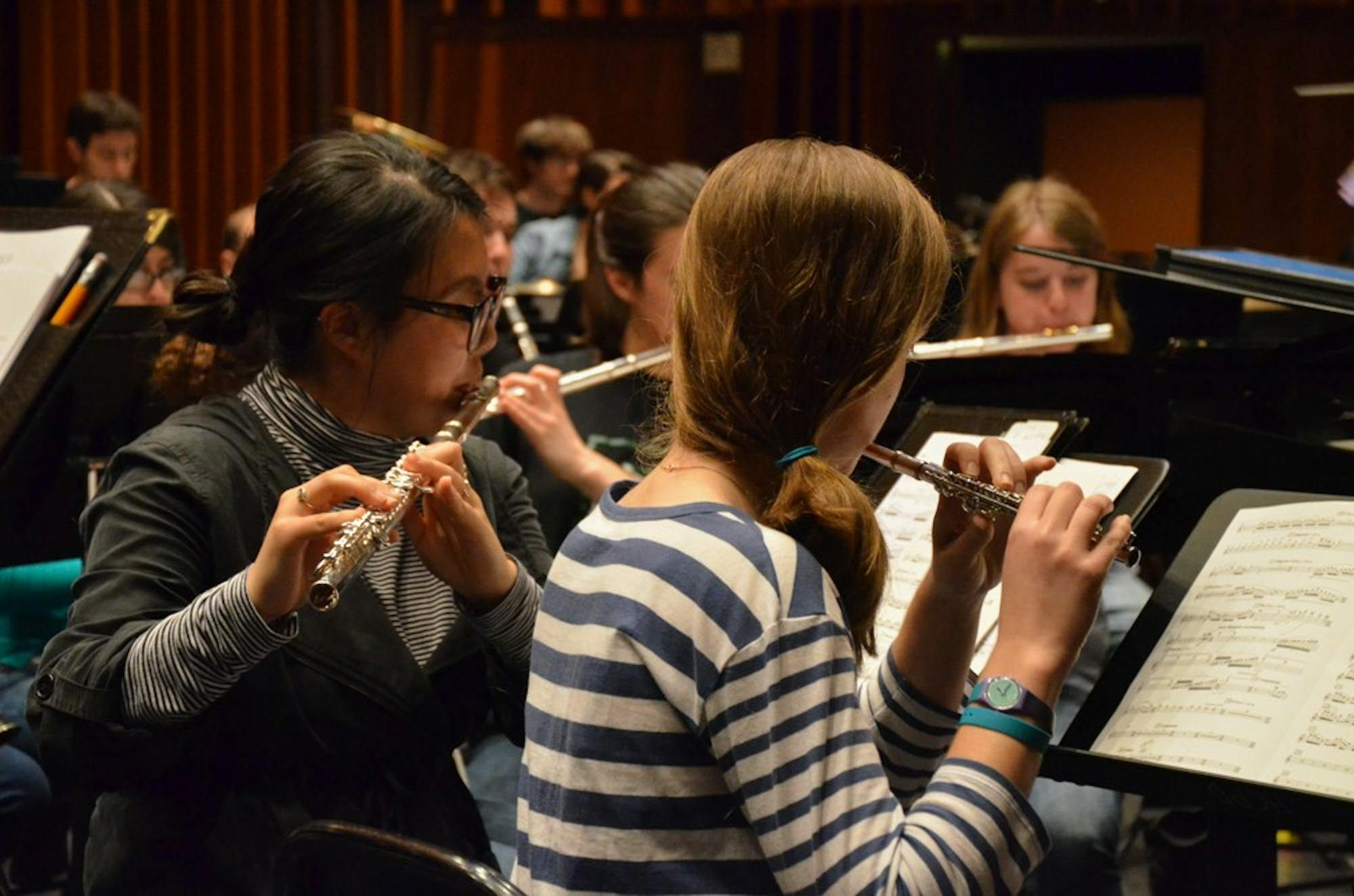The convergence of music and architecture is quite uncommon. Yet, the New Music Festival, a three-day event at the College, explored this peculiar intersection of fields from May 1 to 3. The music department and the Hopkins Center presented the festival, titled “Music, Soundspace & Architecture.”
Graduate student Daniel Miller GR ’17, who co-directed the festival with Brian Chalif ’16, said this year’s theme incorporates many disciplines outside of music.
Music professor and festival director Kui Dong noted this year’s festival represents an expansion from previous years’ by bringing in members from the biology and computer science departments to speak at the reception.
“The festival has been interdisciplinary, but it just hasn’t extended to other departments,” Dong said. “This year we particularly wanted to do it that way.”
The festival kicked off this past Sunday with a reception at the Top of the Hop featuring music performances and a panel discussion followed by installations in the Hop Garage.
Students in Music 50 “Contemporary Music Lab” opened the reception with a composition by digital music graduate student Stefan Maier GR’17, who played the piccolo during the performance.
Neukom fellow Laurel Symes and music and computer science professor Brian Casey gave talks as part of the panel discussion. Symes’ talk “The Music of Nature: Animal Communication and Soundscapes” discussed the intersection of biology and music by focusing on animal sounds. She explored the echolocation of bats, which she said would be quite loud if humans could hear it, the complexity of bird songs and the possibility of predator specialization for sound types.
Casey discussed how music and architecture evolved together throughout human history. He tied in Greek mathematician Pythagoras’ work on the interval-to-length ratio seen in the dimensions of the Parthenon and Greek composer and architect Iannis Xenakis’ work with microsound and polytopes.
Closing the panel discussion, film and media professor Jodie Mack shared her avant-garde short film “Something Between Us” (2015), and biology professor Olga Zhaxybayeva delivered a talk entitled “An Orchestra in Miniature: How Microbes Explore Physical, DNA and Protein Space.”
The festival continued on Monday with a performance in Faulkner Recital Hall by Mise-en, a contemporary music ensemble from New York City, who Dong invited to be the festival’s featured group.
In the past, Chalif said the festival invited smaller groups such as quartets to serve as the featured group. Mise-en, an 11-person ensemble, is the largest featured group to perform at the College since Dong started planning the festival, he added.
The performance opened with music professor Spencer Topel’s “Vox Nihili” (Voice of Nothing) (2016), which considers an imaginary landscape filled with humans who have lost their voices and must search endlessly for their bodies.
James Tecuatl-Lee ’11 composed “Sacred Space” (2016), another piece in the set list which incorporates cardiorespiratory elements from Zen and yoga practices as well as abstract ritual actions typically found in religious places such as a mosque or a chapel.
Mise-en’s conductor Moon Young Ha directed all the pieces in the program.
On Tuesday, Mise-en performed a second set in Spaulding Auditorium along with three student performance groups — the Dartmouth College Wind Ensemble, the Dartmouth College Glee Club and LuLu, an undergraduate improvisation group.
The festival culminated with an intimate, late-night improvisation session in Sarner Underground. Maier opened the session with solo improvisation on a modular synth. Members of the Contemporary Music Lab and LuLu joined Maier for an esoteric group improvisational piece. The musicians employed innovative and unconventional methods of playing to create an improvised piece that was of melody and structure.
Ambient electronic elements accompanied the instrumental improvisation, which included two guitars, a violin and clarinet in addition to the piccolo. The guitarists scraped and scratched their strings rather than plucking or strumming them, while Maier choked his piccolo to cause air to escape without playing a note in the traditional sense. During the improvisation, a psychedelic animation was projected in the background.
The improvisation appropriately recalled the festival’s theme and interest in the intersection of music and science, specifically Symes’ talk on animal communication through sound. The piece began softly but gradually built itself up to an ecosystem of sound, noise and music, resembling the music of katydids that Symes previously discussed.
Maier said the improvisation session as well as the New Music Festival as a whole were a welcome instance of experimental music and art and a respite from Dartmouth’s conservative view of art.
“There is not a lot of music or art like this at Dartmouth,” Maier said. “It’s great that the festival brought some of that into the spotlight.”




